Industry News
Choosing an engagement ring design involves finding a ring that fits your budget and lifestyle, blends well with the wedding band, and makes you happy. You need to evaluate the engagement ring’s stone and setting, as well as the band type and metals used. Learning about basic engagement ring design makes it easier to find the perfect ring.
The Basic Elements of an Engagement Ring
Whether you buy a pre-set engagement ring or design your own from separate settings and gems, there are several important elements to consider. Each of these basic aspects will affect the overall engagement ring design, so it’s essential that you understand these factors before you make a decision.
Setting
One of the most important elements in the design of any engagement ring is the setting. Setting refers to the metal base for the gems in the ring, as well as any decorative elements that are crafted in precious metal. It serves two main functions: supporting and securing the gems and adding decorative appeal. There are a number of different engagement ring settings to choose from, including the following popular options.
- Bezel settings – A design in which the gem is set in a cup of precious metal, this type of setting is ideal for fragile gemstones or people who have active lifestyles.
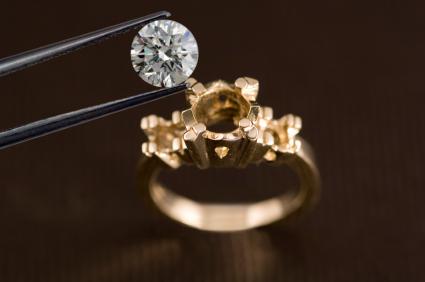
- Tiffany settings – Also called prong settings, this type of design holds the gem in place with small metal prongs. It’s perfect for providing maximum light reflection and refraction within a diamond or gem.
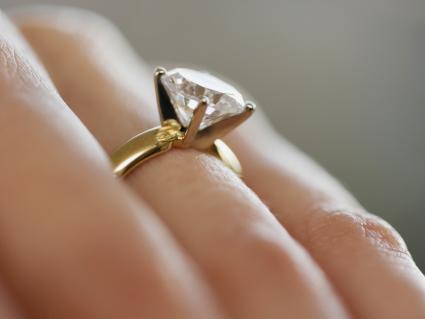
- Tension settings – In this type of design, the band is perfectly calibrated to hold the diamond in place without prongs or bezels. It’s a modern, clean-lined choice.

- Channel settings – This type of setting involves a channel of diamonds or gems held in place by higher precious metal sides. It is perfect for adding diamond enhancements to the band of the ring.
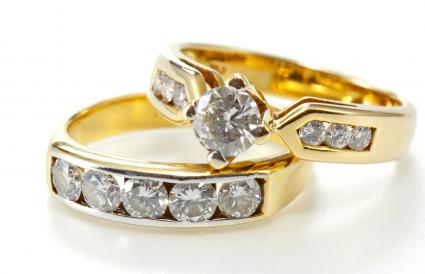
- Pave settings – Typically used to give all-over sparkle to a ring, a pave setting involves placing dozens of round diamonds across the surface of a band. It’s often used in combination with other settings.
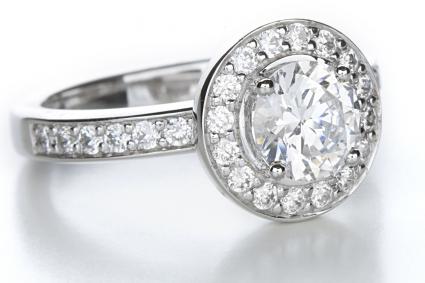
Precious Metal
As you shop, you’ll see engagement rings fashioned from many different precious metals. Each metal has its advantages and disadvantages when it comes to price, durability, and perceived beauty. Certain metals also evoke specific styles, and many brides-to-be prefer to match the precious metal in their engagement ring to other jewelry they wear on a regular basis. The metal you choose is a very important element in the design of the ring. Here are a few of the most popular options.
- Yellow gold – Available in 10k, 14k, 18k, and 24k and other parities, yellow gold offers a classic, warm choice for your engagement ring’s setting. Gold is malleable, so lower karat ratings are best for designs requiring structure.
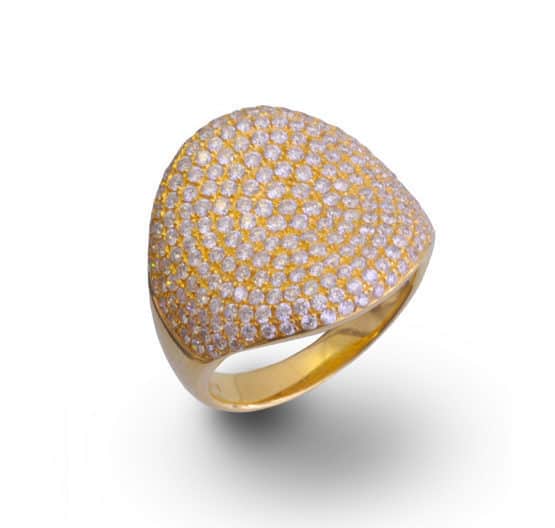
- White gold – Less expensive than platinum but with a similar cool tone, white gold comes in a variety of karat ratings, including 10k, 14k, and 18k. Because of gold’s malleability, it is best to choose lower karat white gold for elaborate settings.
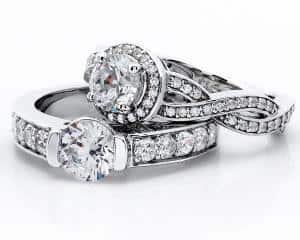
- Rose gold – A pretty alternative to classic yellow or white gold, warm-toned rose gold comes in 10k, 14k, and 18k parities. It’s a unique and surprising choice for an engagement ring setting.
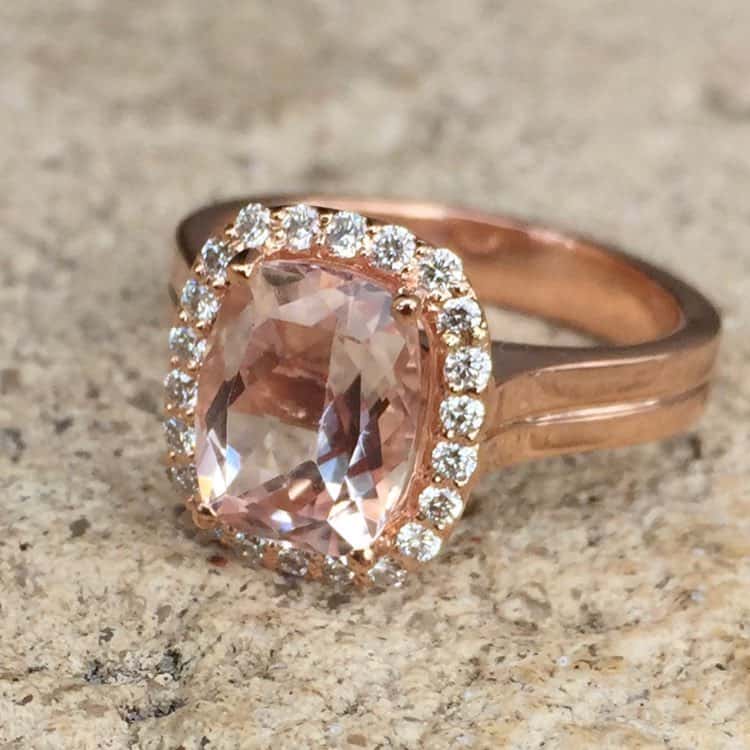
- Platinum – One of the most durable and costly metal choices for your setting, platinum has a great deal of cache. It’s an excellent option for elaborate settings or for ensuring the secure placement of gems.
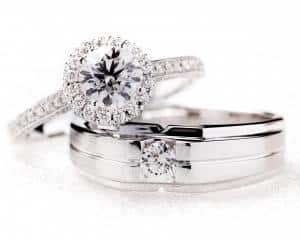
- Sterling silver – Far less expensive than many other options but still very lovely, sterling silver is another classic choice. It is less malleable than gold, so it’s a great material for almost any setting.

- Titanium – Affordable and very modern, titanium makes a great choice for contemporary brides-to-be. It has very little flex, so it’s extremely secure. However, it cannot easily be resized.
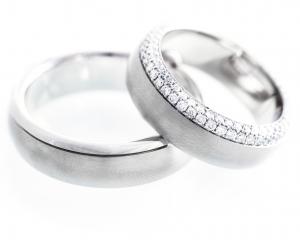
- Two-tone – Many settings mix two or more metals to create a unique, eye-catching look. Popular combinations include white gold and yellow gold, as well as yellow gold and platinum.
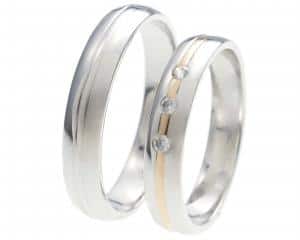
Band Style
The band, or shank, of your engagement ring is the part that goes with your finger. The width, shape, and style of your band will affect the overall design of the ring. Some band styles are better suited to active lifestyles, while others are more decorative. The right one for you is mostly a matter of personal preference. Here are a few of the most popular.
- Wide band – Usually more than five millimeters in width, a wide band engagement ring offers a substantial base for your gem. It’s a great, durable choice for almost anyone, although it’s wise to try on the band to ensure you find it comfortable.
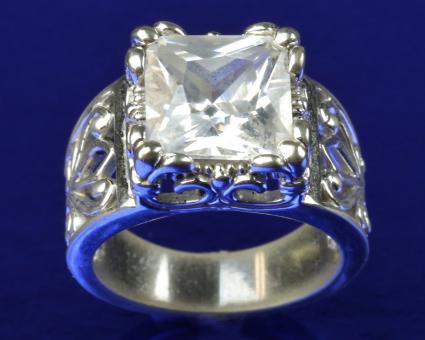
- Twisted band – A twisted band ring is a delicate and lovely choice, featuring a twisted shank that accents the center gem. This band is best for people who aren’t too hard on their jewelry, since the open areas in the band may be prone to snags.
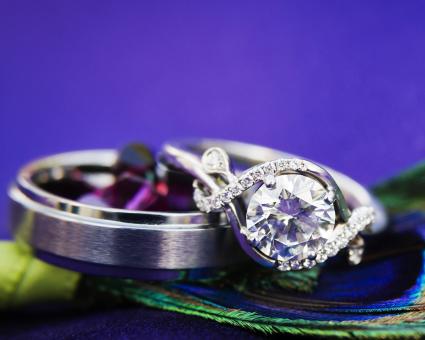
- Split shank – A split shank ring features a band that splits into two parts as it reaches the center gem. This is a graceful style that is both durable and lovely.
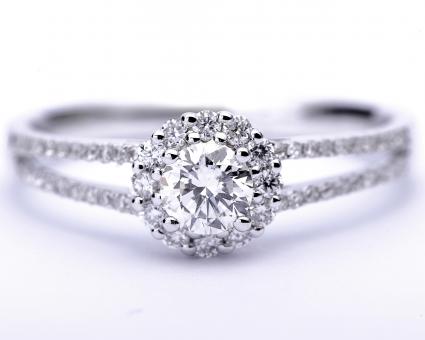


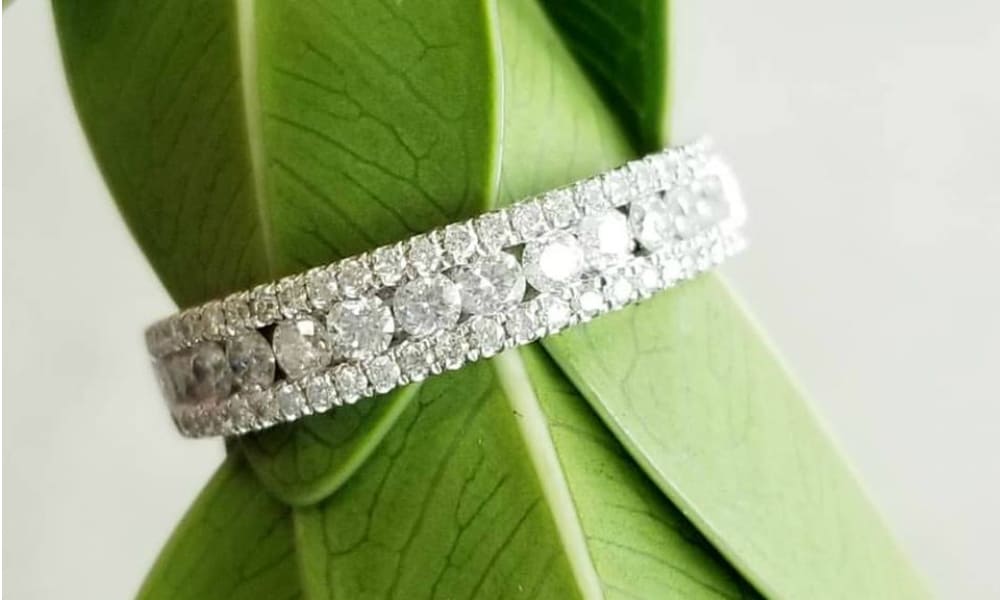


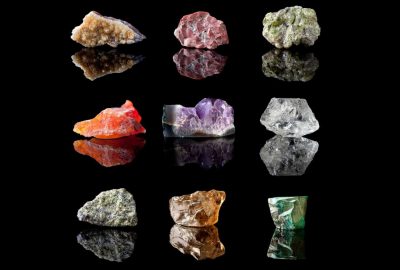
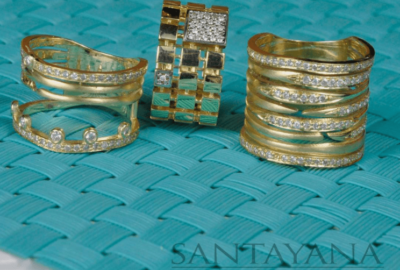






































Leave a reply